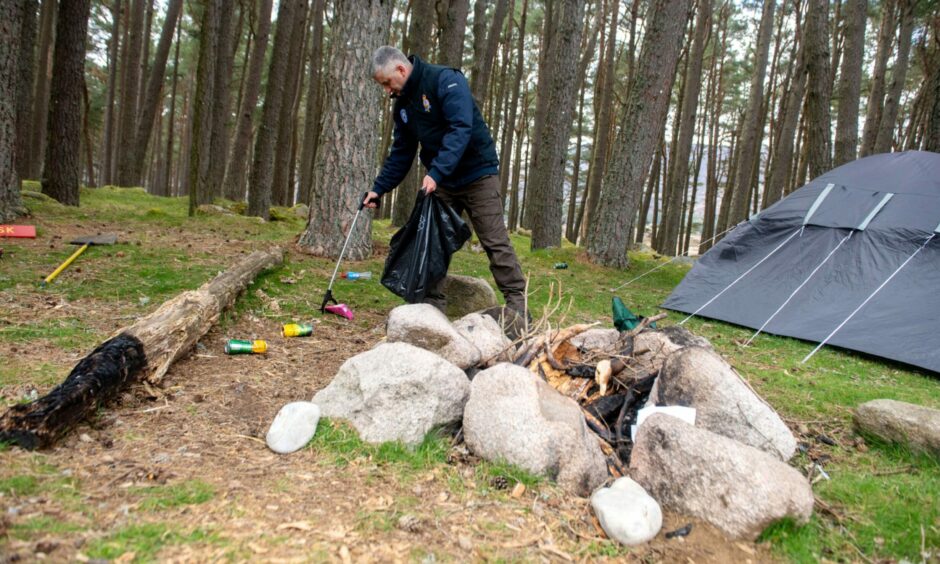
“I think it’s the midges that drive them mad,” reckons Glyn Jones, head ranger of the Royal Family’s Balmoral Estate.
Armed with a litter-picker, he’s carefully poking around a woodland crime scene of sorts, and there’s evidence of misdeeds everywhere.
A tent without occupants, a burned-out campfire and glass bottles casually chucked about.
Used needles and even human faeces hastily hidden beneath a rock.
It’s the filth-strewn remains of an abandoned campsite at Loch Muick in Aberdeenshire.
Such scenes are sadly an all-too-typical sign of irresponsible wild camping — or so-called dirty camping — which has plagued Deeside’s beauty spots in recent years.
“They get out the tent in the morning, get attacked by the midges, and they just run away,” postulates Glyn.
But this particular crime scene isn’t like the dozens of similar ones Glyn and his fellow rangers have to deal with every year.
Why?
Because it’s fake.
A fake campsite, but a very real problem of dirty camping in Aberdeenshire
Glyn is actually standing at a pretend dirty camping site, set up at the Loch Muick car park to show the public the problems they could cause by being inconsiderate while exploring Scotland’s great outdoors.
He’s joined by police officers, firefighters, and fellow rangers of all kinds from other Deeside estates, Aberdeenshire Council, Nature Scot and the Cairngorms National Park.
The services are launching a joint campaign urging the public to behave themselves in the countryside, in order to prevent some of the chaos they anticipate this summer.
Glyn says he could “probably write a book” when I ask him for some examples of the grim finds he makes when he comes across real life dirty camping sites around the Balmoral estate.
“You’ll see four or five tents with brand new kit and gear just left behind.
“Rucksacks, money, iPhone chargers, fishing rods, stoves, clothes, they just leave everything.”
He thinks some of the people just get up and go because they’re being bitten to death and forgot their midge spray.
“But other people are just lazy,” he adds.
What’s the difference between wild camping and dirty camping?
Glyn is joined by other rangers, including Fiona Banks, ranger service co-ordinator for Aberdeenshire Council.
“Wild camping,” says Fiona, “is when I could go past your campsite the next day, and not notice any signs you were there except maybe an impression in the grass from your tent.
“Dirty camping is when our rangers have come along and filled an entire van up with rubbish and waste.
“Broken chairs, tents, sleeping bags, beer cans, toilet roll, the works… everything is just left.”
‘It’s gutting, it’s heart-breaking almost’ says ranger Fiona on dirty camping
She says she’s come across a lot of horror stories, but the past few years have been particularly bad, due to the impacts of Covid lockdowns and more individuals heading to the hills.
“From 2020 onwards we’ve seen some really intense pressure on some of our key hotspot sites,” says Fiona.
“It’s just incredible, you’ll turn up and find half-burned logs, saws stuck in trees where they’ve tried to cut them down, empty vodka bottles lying about, litter everywhere, toileting going on… it’s hugely unpleasant, and we have to deal with it.”
When I ask her what she thinks goes through people’s minds when they leave sites like this, Fiona guesses some are just too hungover to bother cleaning up.
The emotional toll on rangers like Fiona from dealing with such treatment of our precious wild spaces is significant.
“If you’ve been visiting a site for two decades or so, and you see the complete disregard some people have for the special qualities of that site…
“It’s gutting, it’s heart-breaking almost.
“We’ve got sites where we’ve had nesting birds for years, and just because of people not thinking properly about the consequences of their actions, we’ve scared them off.
“We want to welcome everyone, but people need to understand the impact they can have if they’re not responsible.”
Glen Tanar ranger views dirty camping as a failure of the ranger service
“The problem is, people don’t come into the countryside to intentionally create this sort of disaster, it just happens.”
Eric Baird is head ranger for the Glen Tanar estate, near Aboyne.
Like Fiona and Glyn, he’s been dealing with dirty campers for years.
He believes that the best way to tackle the problem is to prevent it in the first place.
Eric says: “It’s a heart-sinking moment when you find one.
“To me, it’s a sign of our failure.
“It’s a sign we haven’t provided the right advice at the right time.
“We’ve not provided robust sites for these people to use, or we’ve not met these people beforehand, when they’re younger, to educate them.”
Eric and other rangers at Glen Tanar take part in a lot of work to teach people, especially youngsters, about the importance of nature and how best to look after it.
Our exploration of Deeside continues at Glen Tanar, where ranger Eric Baird gives a fascinating account of how land management practices are shaped by the social attitudes and economic conditions of the time #natureonourdoorstep #cairngorms2019 #uoasbs pic.twitter.com/zxxVmwe5Ez
— Louise Ross (@ecologylou) April 7, 2019
He says properly dealing with dirty camping sites ensures everyone can benefit from our wild places, no matter the actions of a problematic minority.
“Once you’ve cleared away anything that’s dangerous, you then have to try and restore the site as much as you can to its natural state, so the next visitor can come and enjoy it, and they don’t need to suffer the consequences of the disaster.”
Dirty campers do it as ‘largely an impulse thing’
Eric, who has been a ranger for “quite a few decades now”, believes the kind of people who dirty camp do it because it’s “largely an impulse thing”.
“This is not people who go camping regularly, this is people who have decided okay, we’ve had a few hot sunny says, let’s get down to the supermarket, get some camping gear, and go wild in nature.
“Then they find out that it’s not working out the way they thought.
“The wood isn’t burning properly, they don’t know where to get fresh water, the campsites getting trashed and it’s getting cold, then what they’ll want to do something else impulsively.
“Then they’ll just leave.”
He continues: “This is not done as a result of malice or ill-intention, this is done as a result of ignorance and impulse.
“If people want to come and do some camping in the countryside, then learn how to do it before you go.
“Speak to a countryside ranger beforehand.
“If you arrive at a site, try and get in touch with a countryside ranger, and they’ll help you on your way.”
If you want to go camping this year, the best advice is to follow the Scottish Outdoor Access Code, and do your absolute best to leave no trace.
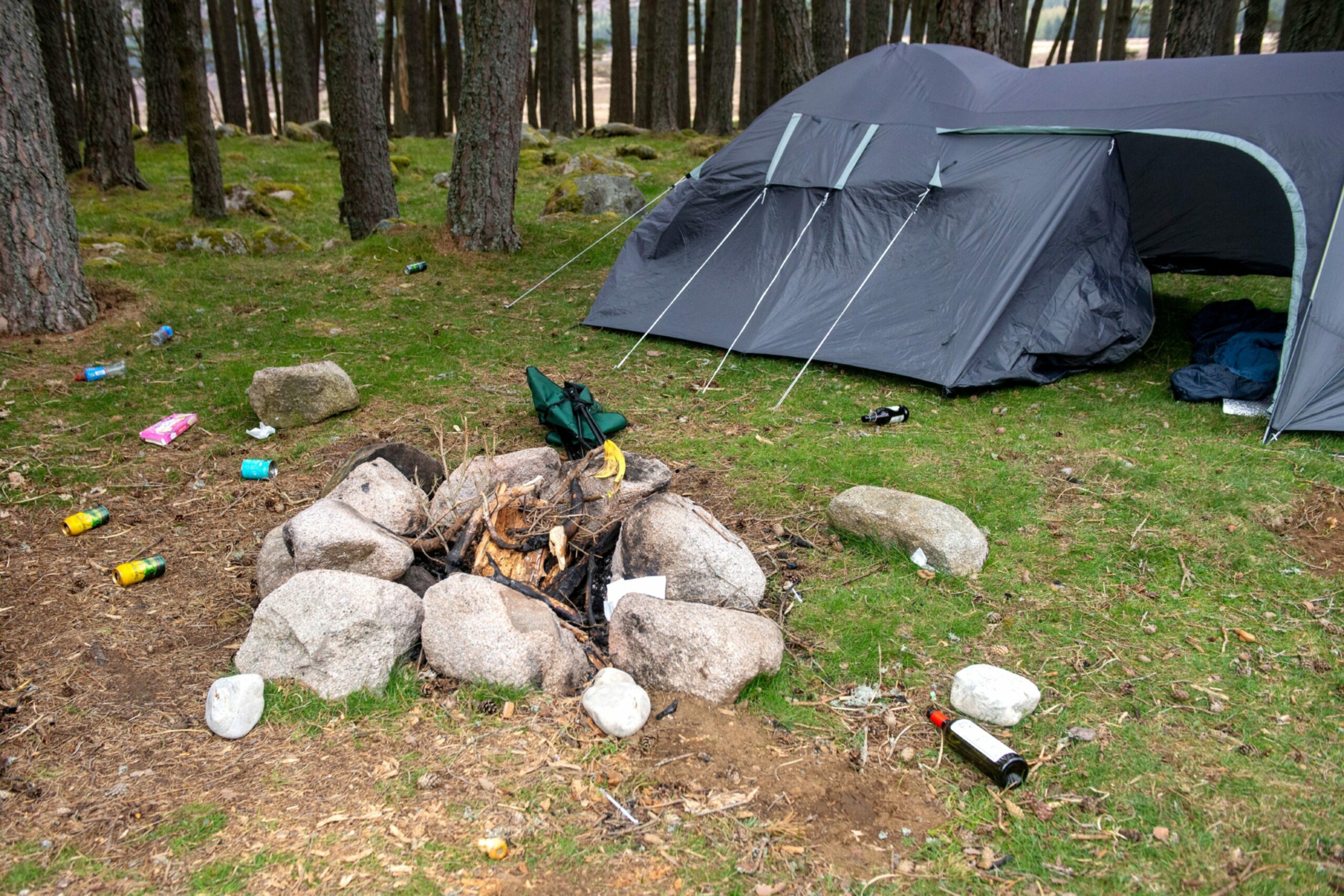

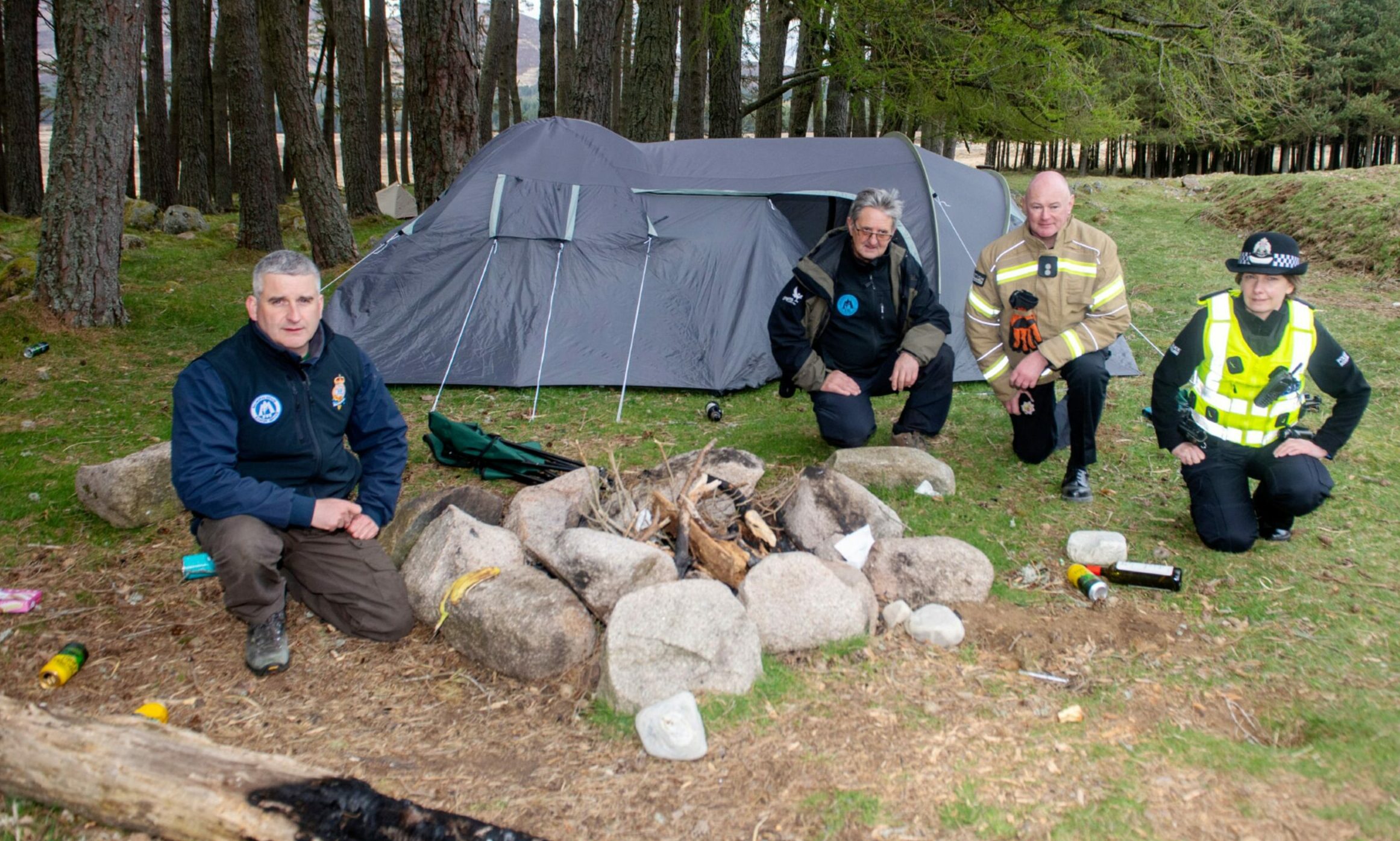
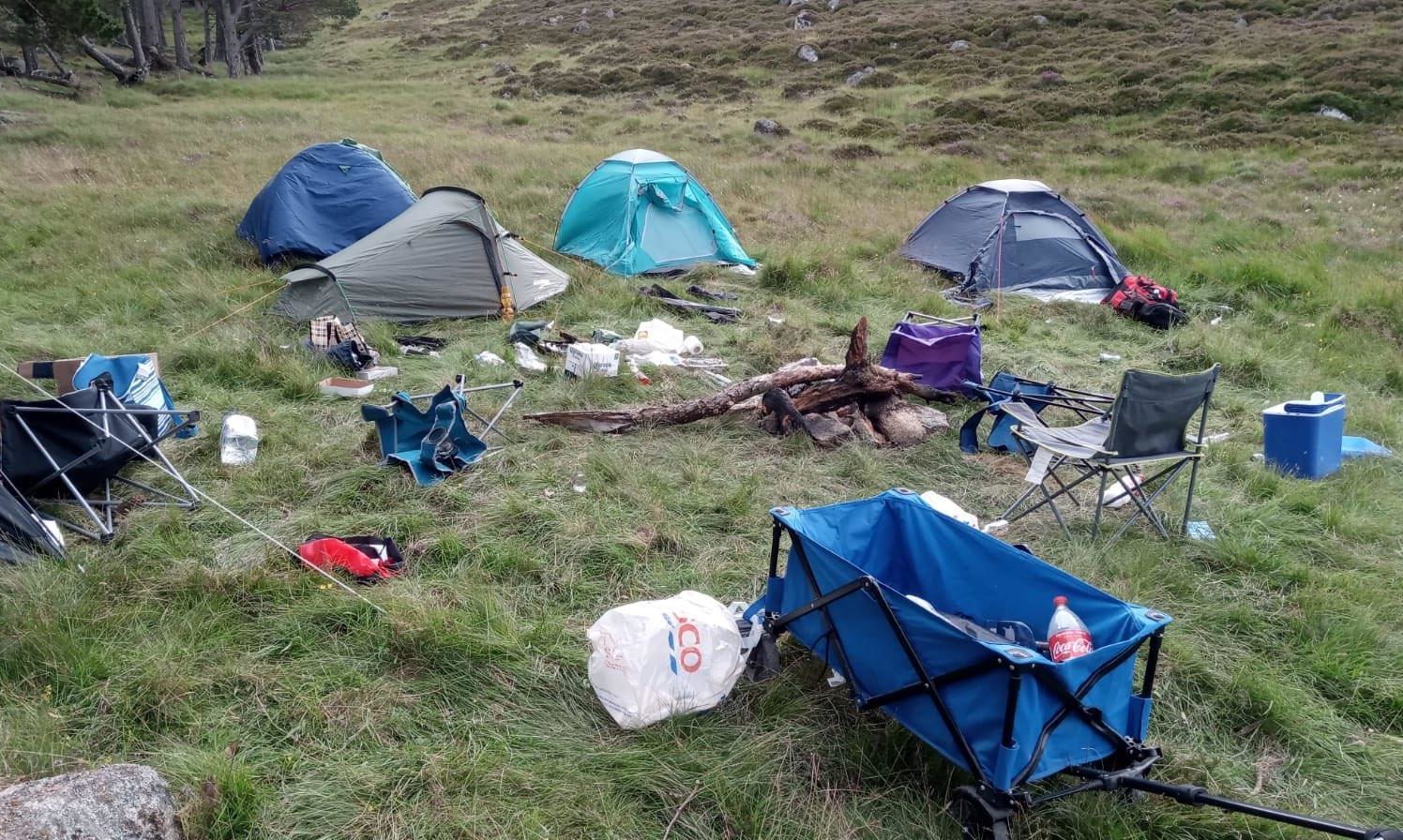

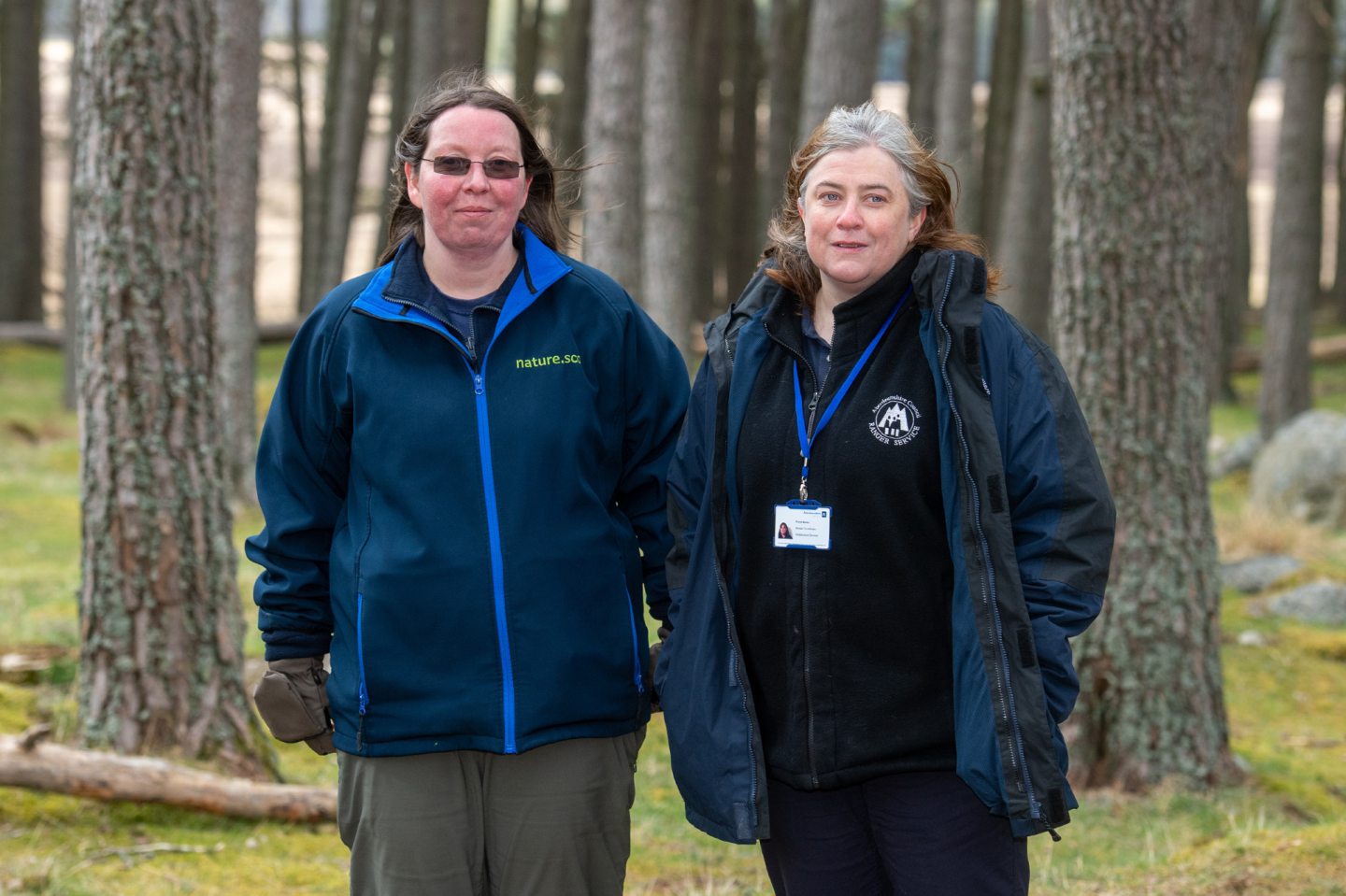
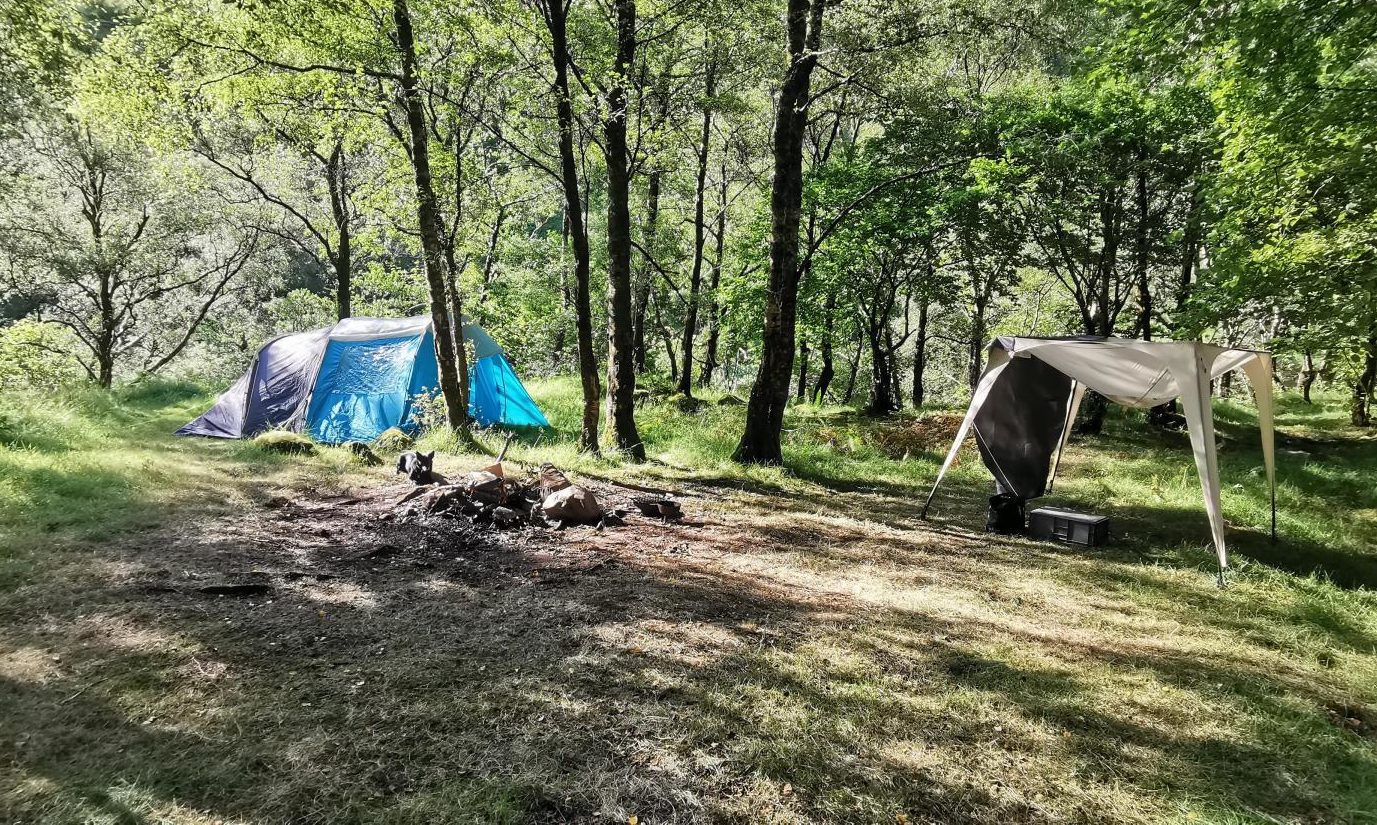
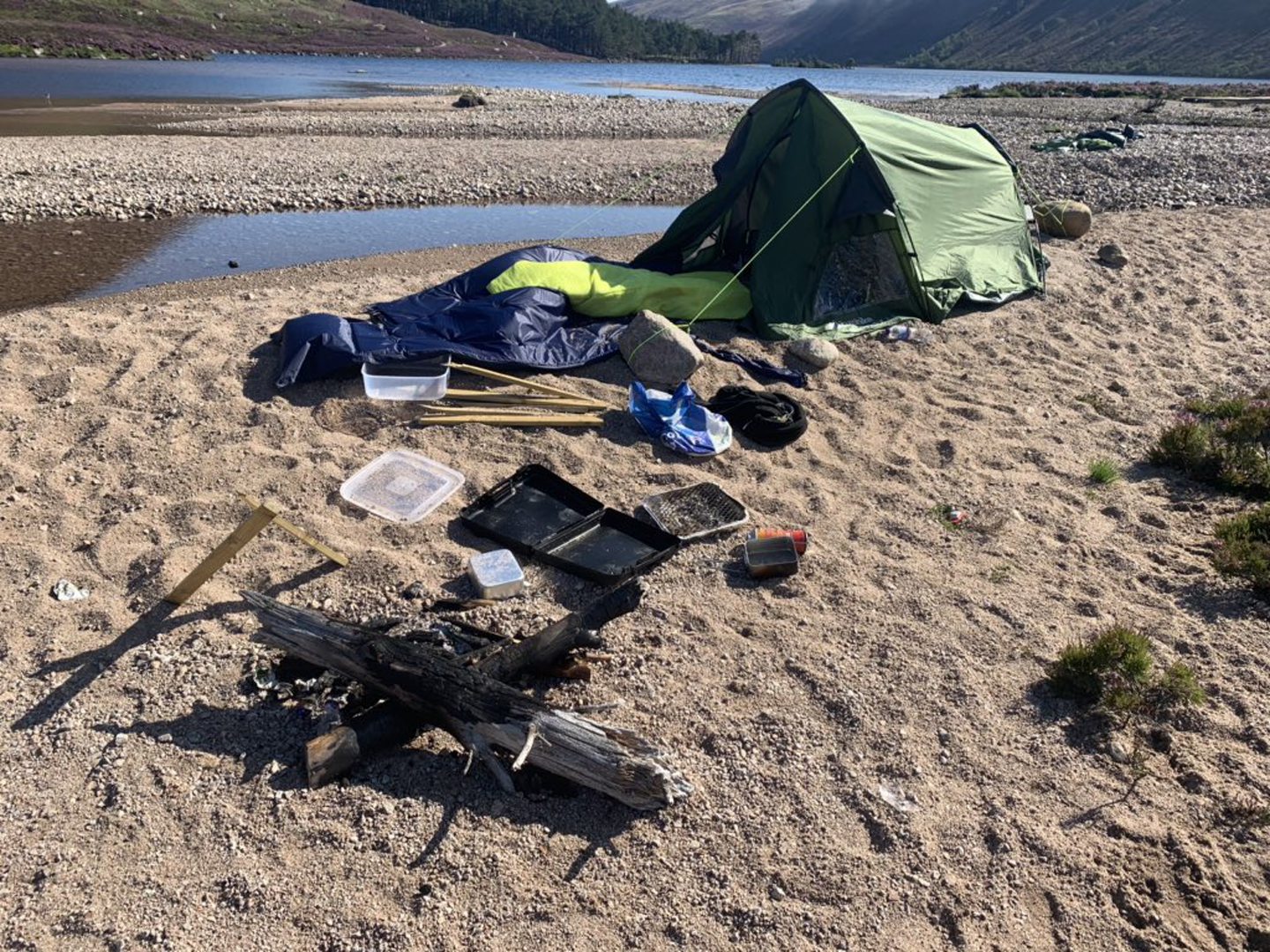
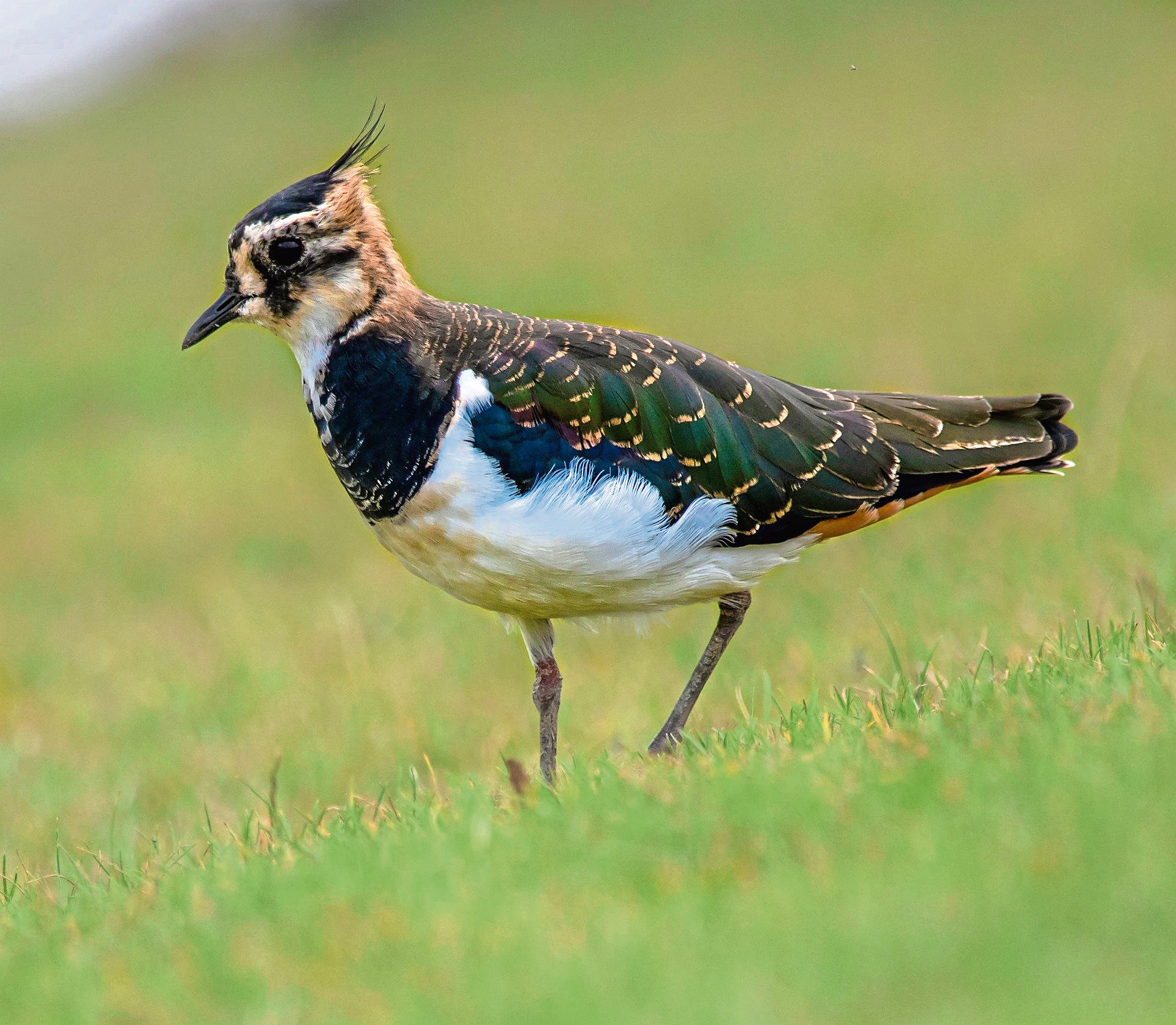
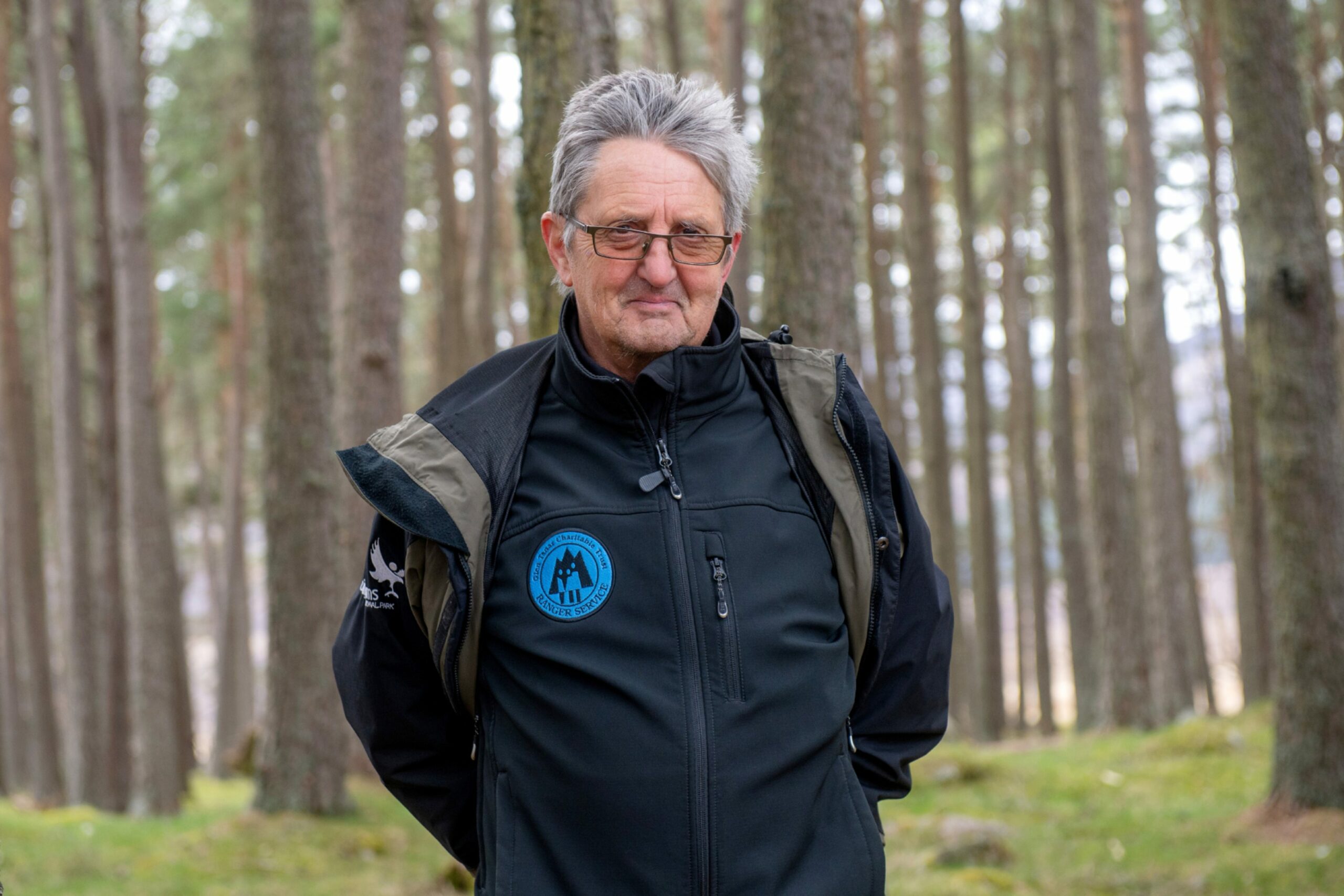
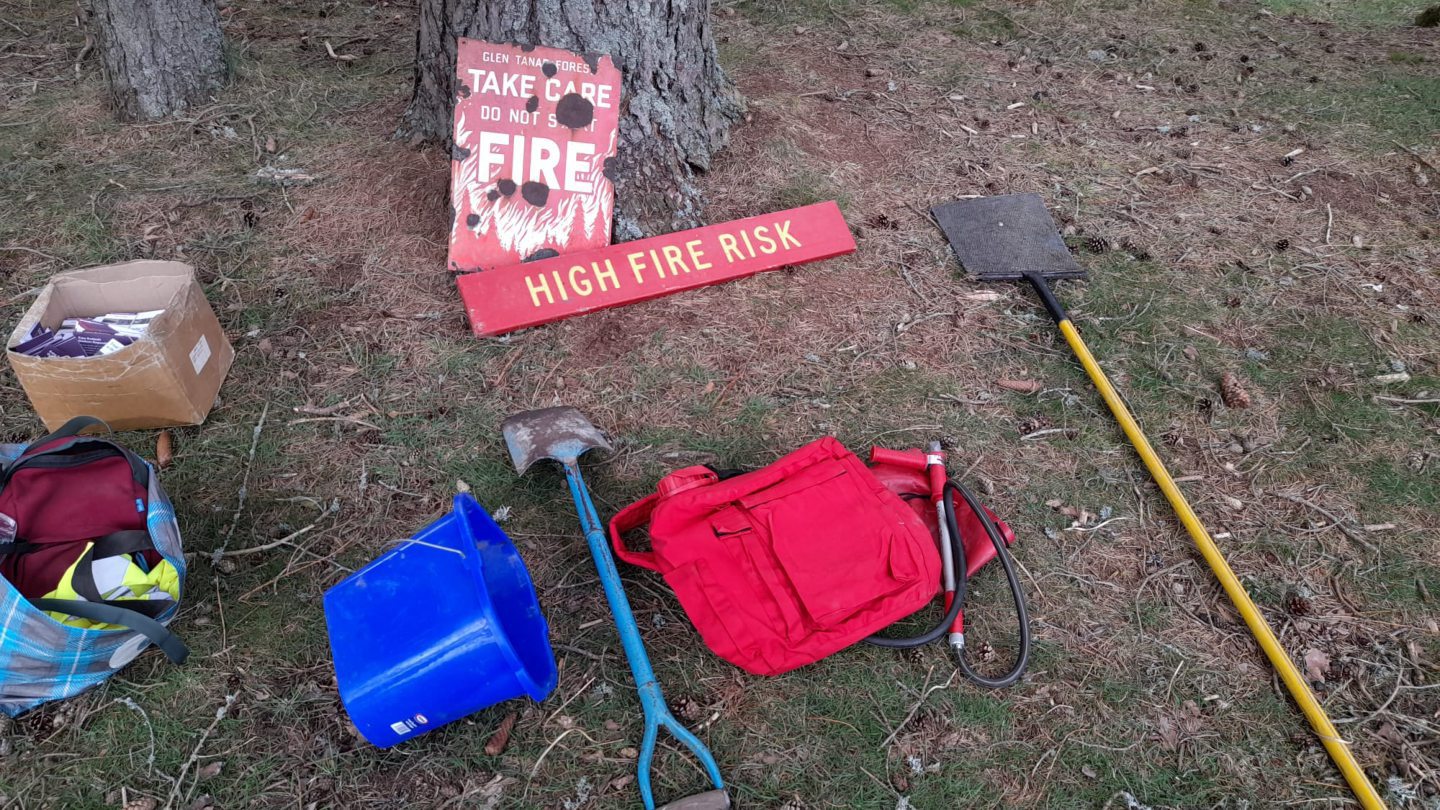
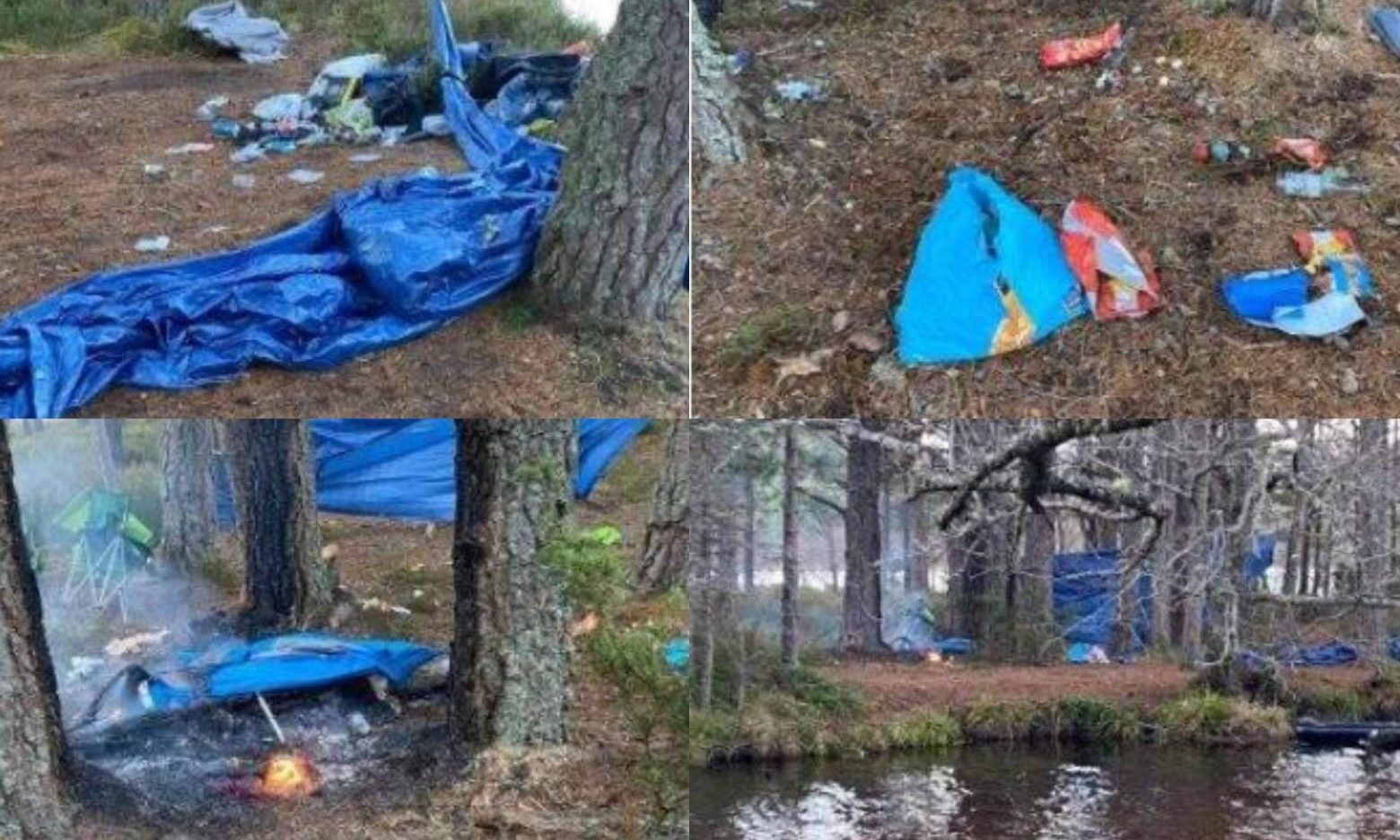
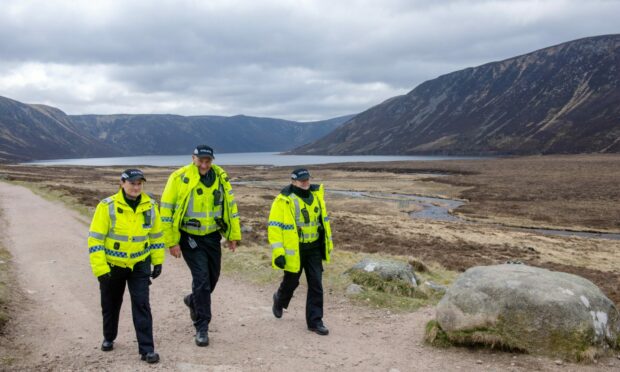
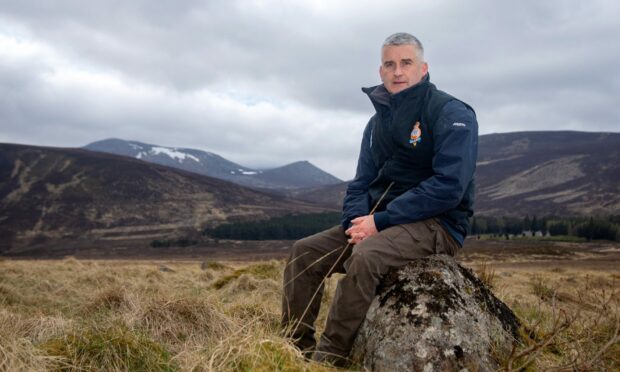
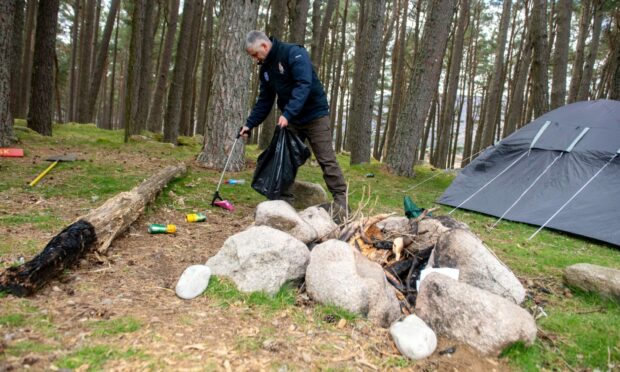
Conversation